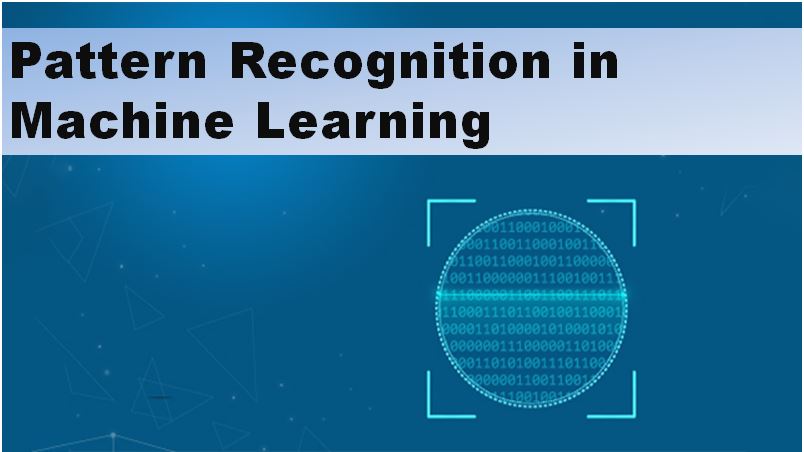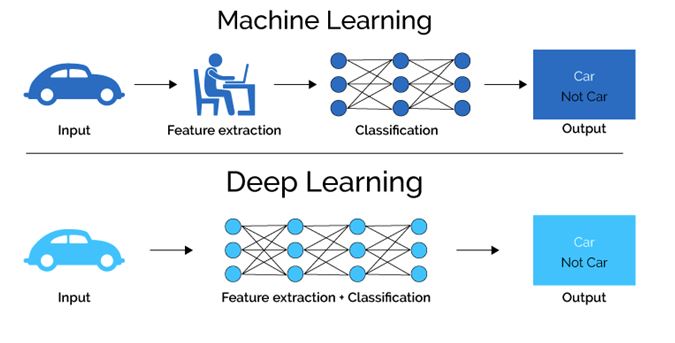
Pattern Recognition in Machine Learning
Introduction
Have you ever thought of how your brain assesses the world around you? For instance, when you’re looking through a large number of Facebook posts and photographs, your eyes can stop on a familiar face, despite huge loads of other information next to it. We are so used to pattern recognition because of our brains that we don’t even stop to think about what controls the technological side of it.
In this article, we’ll discuss about pattern recognition and how this relates to the machine learning field.
What Is Pattern Recognition?
Pattern Recognition In General:
A pattern is some marvel that repeats regularly depending on a set rule or condition.
Humans and animals learn with the assistance of the senses. Learning helps in distinguishing and recognizing patterns around us. The pattern recognition matches the information received with the information previously stored in the brain.
Pattern Recognition In Computer Science:
In computer science and machine learning, pattern recognition is a technology that matches the incoming data with the data stored in the database.
Features
- Pattern recognition system has to recognize familiar pattern speedily and accurately.
- Recognize and classify objects that are not familiar
- Accurately recognize shapes and objects from various angles
- Identify patterns and objects even though partly hidden
- Recognize patterns quickly with ease, and with automaticity.
Patterns in Machine Learning
Machine learning uses mathematics, statistics, and domain-specific knowledge and data to resolve complex problems.
Machine learning is transferring things into numbers and finds patterns in those numbers.
For finding patterns, algorithms are used which is a specific set of steps to perform a task.
An “algorithm” in machine learning is a procedure that is run on data to create a machine learning “model.” Then the model identifies the patterns in data that fit the dataset i.e., to find patterns in data.
A “model” in machine learning is the result of a machine learning algorithm applied on data.
A model is basically a mathematical function that can adapt to new data by tuning its parameters.
Models are like the general equation of a line y = a + bx, while patterns are like a particular equation, e.g. y = 5 + 2x. Machine learning is about generalizing properly to brand-new situations.
The elementary task of machine learning is to build a model that can predict or classify various patterns from data. One of the examples of this is the classification of spam or non-spam data.
As the number of samples used for learning increases the algorithms improve their performance adaptively.
Supervised and unsupervised learning are the two main types of machine learning.
Pattern recognition in a supervised approach is referred as classification. These algorithms use two-stage methodology for finding the patterns. The first stage includes building the model and the second stage involves the prediction for new or unseen objects.
Unsupervised learning is a type of machine learning that searches for previously undetected patterns in a dataset with no prior labels and with less human intervention.
Classification comes under supervised learning, while clustering comes under unsupervised learning.
Deep learning is a particular type of machine learning that is motivated by the working of the brain. Deep learning uses artificial neural networks for more complex pattern design like audio and image processing, natural language processing, etc.
The below picture differentiates between deep learning and machine learning techniques.

Machine Learning vs. Pattern Recognition
Machine learning is a type of pattern recognition which is essentially the idea of training machines to recognize patterns and apply them to real world problems. Machine learning is a technique that can learn from data and iteratively continue updating itself to perform better yet, Pattern recognition does not learn problems however, it can be coded to learn patterns.
Pattern Recognition Applications:
Pattern recognition can be useful throughout industries and organizations. Let’s see some of the real-life business use cases.
- Natural Language Processing Applications like spelling and grammar checkers, spam detectors, translation, and sentiment analysis tools intensely depend on pattern recognition techniques. Regular Expressions are useful in identifying complex text patterns for natural language processing.
- Image processing, segmentation, and analysis
Pattern recognition is utilized to give human recognition intelligence to machines which are needed in image processing. - Computer vision
Pattern recognition is utilized to take out important features from given image/video samples and is used in various applications such as biological and biomedical imaging. A classic example is tumor identification. - Seismic analysis
The pattern recognition technique is used for the discovery, imaging, and interpretation of temporal patterns in seismic array recordings.
In different types of seismic analysis models, Statistical pattern recognition is applied. - Radar signal classification/analysis
Pattern recognition and signal processing methods are used in various applications of radar signal classifications such as landmine detection and
identification. - Speech recognition
The utmost success in speech recognition has been obtained by using pattern recognition models by treating each word as a unit. - Fingerprint identification
Many fingerprint recognition methods are available and are in use to
perform fingerprint matching in which pattern recognition approaches
is widely used.
Pattern recognition technology makes the analytics simpler, it results and offers a reliable source for Business Intelligence Insights, which are a crucial thing for organizations and decision-making process.



